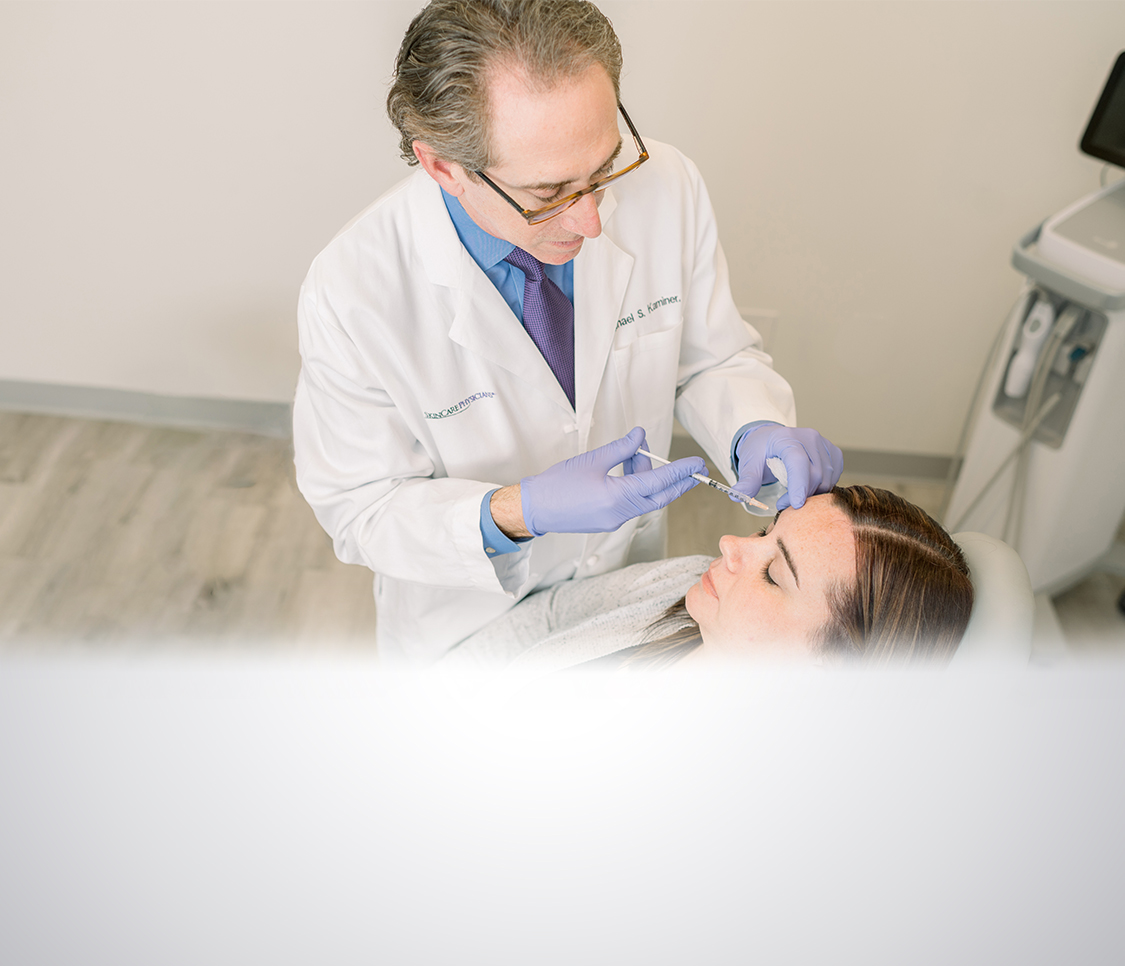Chronic venous insufficiency: The basics
Chronic venous insufficiency is a condition where there is a poor venous return from the legs… Read On


Treatment for Spider Veins: Sclerotherapy
Superficial leg veins, also known as spider veins, telangiectasia, or star burst blemishes are small, dilated surface veins that can be pink, red, or purple and appear as lines or clusters on ankles, lower legs, or thighs. The questions and answers below will help you learn more about the treatment and decide if it is right for you.
If you are considering a Boston area sclerotherapy treatment to improve the appearance of unwanted spider veins, learn how less invasive techniques can improve your appearance in remarkable ways. Request a consultation online or contact us at (617) 731-1600 to schedule your appointment.
Dysfunction of the valves within veins contributes to spider veins, and several factors may play a prominent role in their development, including heredity, pregnancy, hormone replacement therapy, oral contraceptives, obesity, and trauma. Although exercise, weight loss, and support hose may limit the number of new vessels, it will not prevent their development.
Performed on an outpatient basis, sclerotherapy involves the injection of a sclerosing solution, (such as hypertonic saline, glycerin or Sotradecol) into the dilated vessels. This causes the lining of the vessels to swell and close, resulting in both a lighter color and improvement in the appearance of the vessels. In many cases, the veins can be completely eliminated.
Most people experience mild discomfort for about 15 to 30 seconds, similar to a mosquito bite. The injected veins completely disappear for a few minutes as blood is pushed out by the solution, but they reappear when the blood flow returns. Since many vessels are interconnected, one injection may eradicate several dozen vessels at once by washing over the cells lining the inner wall of the vessel, causing them to shrink. They will slowly disappear, as your body’s natural response to injury clears them.
Veins will fade over six to eight weeks after treatment. Smaller vessels may disappear completely and large vessels should decrease in size.
Serious side effects from this procedure are extremely rare; however, some temporary side effects may occur.
Pressure gauze bandages may be placed over the treated vein and remain overnight after treatment. You should avoid contact sports, aerobics, and use of leg weights during this treatment. A 30-minute, moderately paced walk may be substituted for your regular workout.
Thereafter, ace bandages or compression support hose (available at our office) must be worn continuously (except to shower) for five days after treatment.
Medium-weight compression support hose are recommended for daytime wear during the one to two weeks following treatment; either Jobst sheer support pantyhose or Sigvaris Delilah pantyhose. Both are nonprescription, fitted by height and weight and available in several colors.
Treatment will depend on number, size and location of the veins as well as the level of cosmetic result you desire.
Patients with a history of inflammation of the veins (thrombophlebitis), blood clots in the legs, diabetes, arterial or other vascular problems, or previous leg ulcers are not treated with sclerotherapy. Pregnant women are almost always advised to postpone treatment until six months after delivery.
Yes! Sclerotherapy remains the treatment of choice for spider veins but if sclerotherapy does not fade veins appreciably, if the veins are too small to be treated by sclerotherapy, or if you are fearful of needles, lasers and light sources are highly effective treatment options. The pulsed dye laser (V-Beam), and the long pulsed Nd:YAG laser (Lyra, Gemini, and GentleYAG) are effective in treating red, superficial, fine veins and also some bigger, deeper blue veins. The options will be discussed during your consultation.
Yes. Few patients are aware that unwanted hand and chest veins can be treated just as effectively. The hands can be a telltale sign of aging. Over time, as the skin thins and muscle tissues and fat deposits in the hands decrease, veins appear larger, making the hands appear aged or masculine. Likewise, a number of women tend to have visible breast veins especially after breast augmentation surgery. If deemed unsightly, breast veins can easily be treated with sclerotherapy.
Like treatment of leg veins, injection sclerotherapy offers a fast, simple, and virtually painless way to eliminate unwanted hand veins and chest veins with no significant risks. The treatment is done in the office and requires no anesthesia. It involves the injection of a solution into the vein with a fine needle. The solution causes the veins to slowly collapse over time. Two hours after treatment, the patient can resume all activity without limitations. The results are dramatic and long lasting.
The procedure is safe for healthy patients. Once the target veins are eliminated, blood flow is rerouted to other existing veins without compromising circulation. Some mild bruising and swelling may occur after treatment, but quickly resolves. Patients who have undergone radical mastectomy, those who have a dialysis shunt, or patients who have had any significant trauma to the hands, arms, or chest are poor candicates for this procedure.
At SkinCare Physicians, our doctors and staff are highly experienced with Boston area sclerotherapy treatments to remove unwanted spider veins on the face and body. Get started when you request a consultation online to come visit with us.